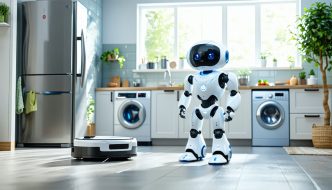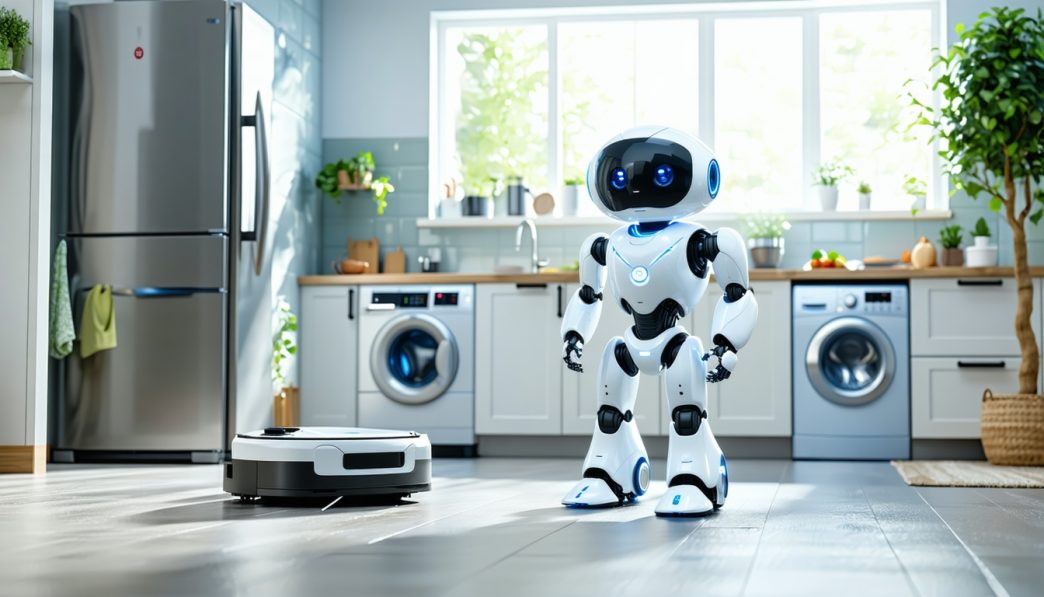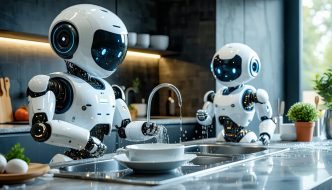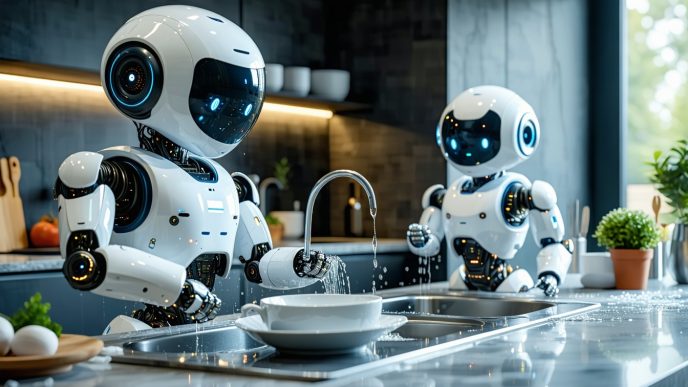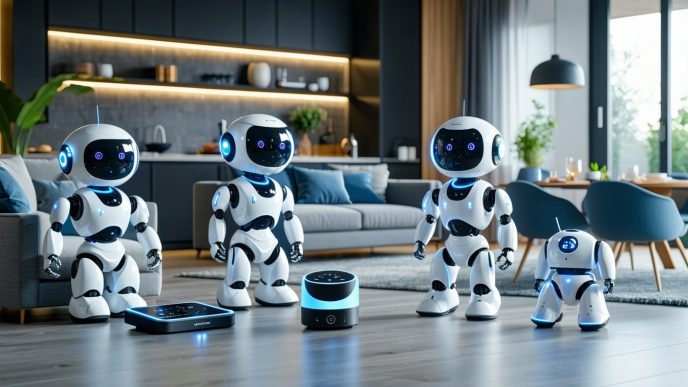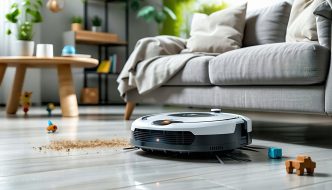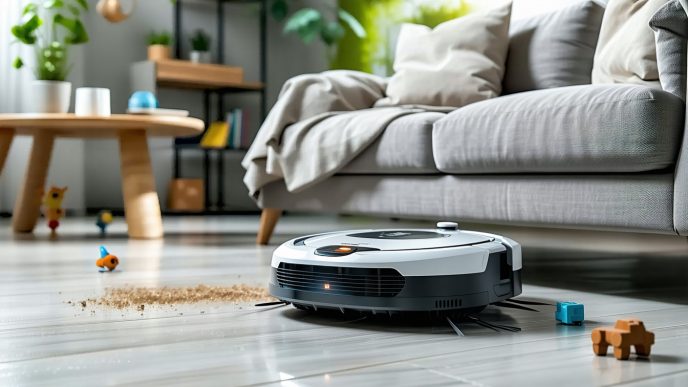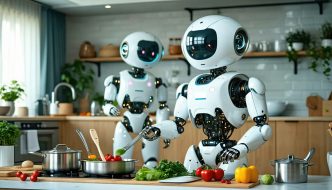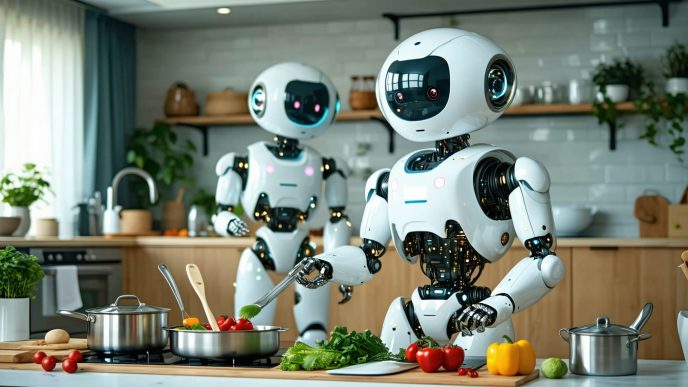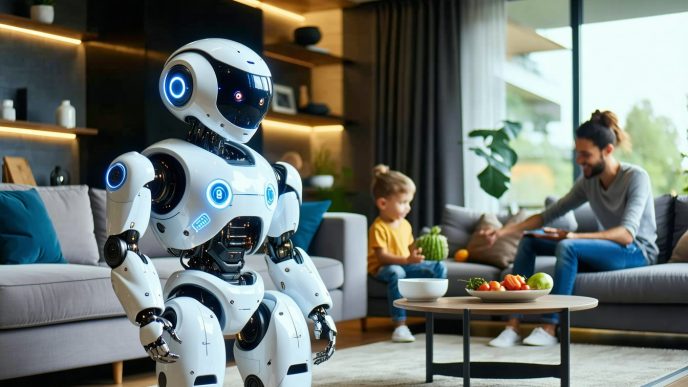Rise of Household Task Robots
Introduction to Automation in Daily Chores
The integration of household task robots into daily living is transforming how families and busy professionals manage their chores. Automation has entered homes, offering solutions that save time and reduce the strain of routine tasks. These advancements cater to various needs, from cleaning to meal preparation, making life easier and improving overall productivity.
The appeal of these robots lies in their capacity to handle time-consuming chores, allowing individuals to focus on more meaningful activities. By enhancing efficiency in daily routines, household task robots are becoming valuable members of the household.
Evolution of Robotics in Home Tasks
The evolution of robotics in home tasks has witnessed remarkable progress over the years. Initially seen as futuristic concepts, robots have developed into practical household assistants. The timeline below highlights the key milestones in the evolution of household task robots:
| Year | Milestone |
|---|---|
| 1996 | Introduction of first robotic vacuum cleaners |
| 2002 | Launch of robotic lawn mowers |
| 2010 | Emergence of automated kitchen appliances |
| 2015 | Development of smart home technology integration |
| 2020 | Rise of multi-function household task robots |
These milestones illustrate how household task robots have become increasingly advanced, providing a range of functionalities. Innovations such as smart connectivity, AI algorithms, and improved sensors have facilitated their integration into modern households. Features allowing for remote control and scheduling have further enhanced usability.
For those interested in employing robots for specific tasks, options such as robots for cleaning floors and robots for laundry assistance are readily available. The continuous evolution of household task robots not only enhances user experience but also reshapes the landscape of home management, paving the way for further exploration in the future of household automation.
Cleaning and Maintenance Robotic Assistants
Cleaning and maintenance robotic assistants have become increasingly popular among families and busy professionals. These devices are designed to streamline household chores, allowing individuals more time to focus on other important aspects of their lives. This section focuses on three main types of cleaning robots: robotic vacuums, automated mops, and window cleaning robots.
Robotic Vacuums: Keeping Floors Clean
Robotic vacuums are designed to automatically navigate and clean various floor types, including carpet, tile, and hardwood. Equipped with advanced sensors, these devices can detect dirt and obstacles, ensuring an efficient cleaning process.
Key features of robotic vacuums include:
| Feature | Description |
|---|---|
| Battery Life | Typically ranges from 60 to 120 minutes |
| Suction Power | Varies, with models offering up to 2000 Pa |
| Navigation Technology | Includes lidar, infrared, or camera-based |
| Compatibility | Many can integrate with smart home systems |
Robotic vacuums can be programmed for scheduled cleanings, making them ideal for maintaining cleanliness without manual intervention. For deeper cleaning, users can consider combining them with other devices in their daily routines. More about these capabilities can be found in our article on robots for cleaning floors.
Automated Mops: Simplifying Floor Cleaning
Automated mops complement robotic vacuums by handling wet cleaning tasks. These devices can scrub and disinfect floors, making them especially useful for households with pets or young children.
Key features include:
| Feature | Description |
|---|---|
| Water Tank Capacity | Typically ranges from 0.2 to 0.5 liters |
| Cleaning Modes | Various options like sweeping, mopping, or both |
| Drying Capability | Some models are designed to dry floors after mopping |
| Smart Connectivity | Many support scheduling and remote control |
With the ability to set specific cleaning zones, automated mops facilitate thorough cleaning in targeted areas. Homeowners can enjoy sparkling floors without heavy lifting. For a look at the efficiency of robotic mops, check our article on robots for dishwashing and kitchen cleaning.
Window Cleaning Robots: Effortless Shine
Window cleaning robots specialize in tackling the often-arduous task of cleaning windows. These devices cling to glass surfaces and can handle both horizontal and vertical panes.
Key features include:
| Feature | Description |
|---|---|
| Cleaning Path | Typically follows a zigzag or edge-to-edge pattern |
| Suction Technology | Strong suction allows secure attachment to windows |
| Power Source | Uses rechargeable batteries or direct power |
| Safety Features | Many have safety ropes or sensors to prevent falls |
By automating window cleaning, users can maintain their views and allow natural light in without the risk associated with ladder use. For more on keeping spaces tidy, explore our article on robots assisting with organizing and tidying.
These household task robots provide innovative solutions to everyday chores, contributing to a more manageable home environment while saving time and effort. By incorporating these automated tools into their lives, families and professionals can enhance their daily living experiences.
Kitchen Helpers
As household task robots continue to evolve, their applications in the kitchen play a significant role in enhancing efficiency and convenience for busy families and professionals. These innovative devices assist with various culinary tasks, allowing individuals to save time and reduce their workload.
Robotic Kitchen Assistants: Cooking Aids
Robotic kitchen assistants are designed to help with meal preparation and cooking tasks. These devices can automate various processes, from chopping vegetables to stirring pots, making culinary activities less labor-intensive.
The capabilities of robotic kitchen assistants can vary widely, offering functions like:
| Feature | Description |
|---|---|
| Chopping | Automated chopping of fruits and vegetables. |
| Mixing | Ability to mix ingredients for baking or cooking. |
| Cooking | Some models can follow recipes and control cooking times. |
| Measuring | Precise measurement of ingredients for accuracy. |
These robots are particularly beneficial for families who want to encourage home-cooked meals while managing tight schedules. The integration of such technology can provide significant time savings without sacrificing meal quality. For further insights into robots that assist with kitchen cleaning, visit our article on robots for dishwashing and kitchen cleaning.
Dishwashing Robots: Streamlining Cleanup
Dishwashing robots represent a substantial advancement in kitchen technology, addressing one of the most dreaded post-meal tasks. These devices help streamline the cleanup process, ensuring that dishes and utensils are thoroughly cleaned with minimized effort.
Key features of dishwashing robots include:
| Feature | Description |
|---|---|
| Smart Tracking | Ability to identify dirty dishes and their locations. |
| Adjustable Cleaning Settings | Options for various types of dishware and levels of grime. |
| Energy Efficiency | Designed to minimize water and energy consumption. |
| Integration with Smart Homes | Can be controlled remotely or scheduled through smart home systems. |
By utilizing dishwashing robots, families can significantly reduce the time spent on cleaning up after meals, freeing up time for other activities or relaxation. The convenience provided by these robots can enhance daily living and improve the overall kitchen experience. For more information about robots assisting with organizing and tidying, check out our article on robots assisting with organizing and tidying.
Personal Care and Family Assistance
The advent of household task robots has significantly influenced personal care and family assistance. Two notable innovations in this area are robotic lawn mowers and laundry folding robots. Both devices aim to simplify day-to-day chores, providing more free time for families and busy professionals.
Robotic Lawn Mowers: Lawn Maintenance Made Easy
Robotic lawn mowers are designed to take the hassle out of lawn maintenance. These automated devices can efficiently cut grass, allowing homeowners to enjoy a well-kept yard without the labor of traditional mowing. By utilizing advanced navigation and sensor technology, these mowers can navigate around obstacles, ensuring a uniform cut.
Several features enhance the effectiveness of robotic lawn mowers:
| Feature | Description |
|---|---|
| Cutting Height | Adjustable settings for various grass types |
| Battery Life | Typically lasts for 60-90 minutes per charge |
| Operational Range | Can cover up to 1/2 acre or more, depending on the model |
| Weather Sensors | Automatically return to the dock during rain |
Robotic lawn mowers can be scheduled to work at specific times, freeing homeowners from the burden of regular lawn care. For more information on the types of gardening robots available, visit our article on robots for gardening and yard work.
Laundry Folding Robots: Efficiency in Clothing Care
Laundry folding robots represent another emerging area in household task automation. These devices take freshly laundered clothes and neatly fold them, significantly reducing the time spent on this tedious chore. By utilizing advanced algorithms and mechanical designs, they can handle various fabric types and sizes.
The functionality of laundry folding robots includes:
| Functionality | Description |
|---|---|
| Folding Techniques | Ability to fold shirts, pants, and towels |
| Capacity | Can typically fold 20 or more items per session |
| User Interface | Smart and intuitive controls for ease of use |
| Integration | Can work with washers and dryers for seamless operation |
By automating the folding process, these robots allow families to focus on more important tasks or leisure activities. They complement other helpful devices in the laundry process, including robots designed for broader laundry assistance. For additional insights into laundry assistance, check our article on robots for laundry assistance.
The integration of robotic technology into personal care tasks illustrates how household task robots enhance the efficiency of daily responsibilities. As technology continues to advance, these innovations are set to further transform the way families manage their home chores.
Future Possibilities
As household task robots continue to evolve, several advancements are poised to redefine the way families and individuals manage their daily chores.
Advancements in Household Task Robots
The future of household task robots is being shaped by technological developments that enhance their capabilities and efficiency. Innovations in artificial intelligence, machine learning, and sensor technology are enabling robots to perform tasks with greater precision and adaptability.
| Advancement | Description |
|---|---|
| Improved AI Algorithms | Enhanced decision-making and learning capabilities for more efficient task execution. |
| Advanced Sensor Technology | Better navigation and obstacle avoidance, allowing robots to work in complex environments. |
| Smart Home Integration | Seamless communication with other smart devices, enhancing automation and control. |
| Energy Efficiency | Design improvements for longer operational times and reduced energy consumption. |
These advancements will likely lead to robots that can not only execute chores more effectively but also learn individual preferences, making them more intuitive and user-friendly. Families can expect these robots to manage not just singular tasks but holistic home environments.
Potential Impact on Daily Lives
The integration of household task robots is expected to significantly affect daily living. Families and busy professionals can benefit from the time saved through automation, allowing for more focus on personal interests and interactions.
The table below illustrates potential time savings for various household tasks when using robotic assistants:
| Task | Average Time Saved (per week) |
|---|---|
| Floor Cleaning | 5 hours |
| Dishwashing | 3 hours |
| Laundry Assistance | 4 hours |
| Lawn Maintenance | 2 hours |
These time savings can lead to improved work-life balance and provide opportunities for families to engage in leisure activities together. As robots are incorporated into the scheduling and management of household responsibilities, individuals can enjoy enhanced convenience and reduced stress.
The potential for household task robots to operate within smart home ecosystems will further streamline day-to-day routines. By linking robots to other smart devices, families can create a fully automated environment that simplifies life at home. For insights on how robots work with smart homes, refer to our article on household robots working with smart homes.
As technology continues to advance, the future of household automation promises to revolutionize how chores are performed, making daily living more efficient and enjoyable. For more on the upcoming developments in this field, explore our coverage on the future of household automation.

